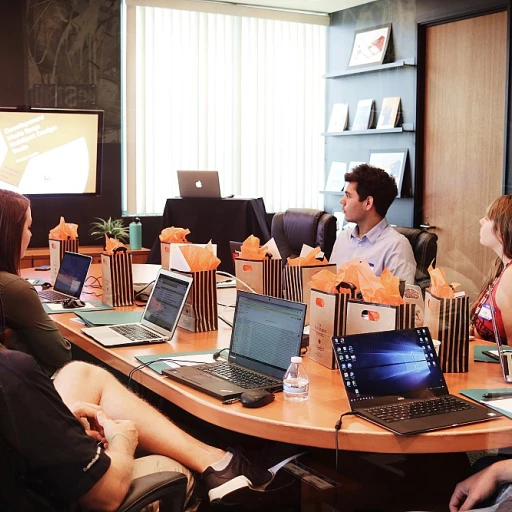
The Role of Managed Staffing in Modern Workforce Solutions
Boosting Workforce Efficiency with Managed Staffing
In today’s dynamic job market, the integration of managed staffing plays a pivotal role in modern workforce solutions. By leveraging a combination of staffing services and technological advancements, businesses can efficiently navigate the complexities of workforce management. The primary aim of managed staffing is to optimize the hiring process, address the needs of contingent workforce, and achieve significant cost savings.
Managed staffing services provide a strategic approach to filling jobs with the right talent at the right time. By adopting contingent talent solutions, businesses can address temporary staffing needs while boosting operational flexibility. This approach supports organizations in maintaining a competitive edge by ensuring that workforce resources align with business objectives.
Moreover, managing workforce programs through curated service providers enables companies to streamline their operations. Staffing solutions often incorporate advanced systems and vendor management techniques, ensuring that human resources and supply chain processes are meticulously aligned. This alignment contributes to better workforce efficiency and improved service delivery.
To fully understand the technical intricacies of managed staffing and its impact on different roles, consider delving into the role of a Desktop Support Analyst in MSP staffing. This will provide deeper insights into how managed staffing can support various facets of engineering and technical job roles, ultimately enhancing the management of professional staffing in contemporary business landscapes.
Key Challenges in Managed Staffing
Navigating the Hurdles in Managed Staffing
In the landscape of managed staffing, there are notable challenges that demand attention and careful handling. Organizations seeking to optimize their workforce solutions often encounter hurdles associated with staffing services and the nuances of integrating a contingent workforce into existing frameworks. While these hurdles can be daunting, understanding their intricacies is the first step toward overcoming them.
- Vendor Management Complexity: Successfully managing multiple vendor management systems involves complex coordination. Aligning different service providers under one management umbrella requires precise strategy and constant oversight.
- Maintaining Quality of Hire: With a reliance on temporary staffing and contingent talent, ensuring that the quality of hire meets organizational standards can be challenging. Balancing cost savings with quality can strain human resources departments.
- Compliance and Legal Risks: Navigating the legal landscape, including labor laws and compliance issues, is critical. Any misstep here can result in significant consequences for the organization, making compliance a top priority.
- Integration of Technology: The role of technical systems in staffing solutions is undeniable. Ensuring that all technological tools and platforms work seamlessly together is often complicated, especially within large-scale operations.
To delve deeper into how human resources and MSP integrate, you might find exploring the role of HR staffing agencies in MSP staffing insightful in understanding how these challenges are approached.
Despite these challenges, many organizations find that with the right strategies in place, managed staffing can be effectively utilized to strengthen their talent acquisition and workforce management initiatives.
Strategies for Effective Managed Staffing
Implementing Effective Staffing Programs
Achieving success in managed staffing requires clear strategies tailored to address its unique challenges. Given the complex nature of workforce management, precise strategies can help businesses navigate the intricacies of hiring and maintaining a contingent talent pool. Here, we explore core strategies that contribute to effective staffing solutions. Firstly, integrating a robust vendor management system is paramount. Such systems ensure streamlined communication between service providers and hiring entities, fostering transparent processes and efficient job fulfilment. When working with contingent workforce, a reliable vendor management program is crucial for managing diverse staffing needs across different industries such as engineering and technical fields. Developing partnerships with multiple staffing services allows organizations to harness a broader talent pool. Effective partnerships help fill highly specialized jobs in sectors like engineering and technical services more proficiently, maximizing the potential for finding ideal candidates swiftly. Another key strategy involves leveraging technology to enhance hiring processes. By implementing advanced systems for workforce management, companies can achieve cost savings while improving their talent acquisition capabilities. For instance, incorporating data-driven tools enables refined selection processes for staffing services and enhances overall contingent workforce solutions. Delving into the benefits of professional staffing, businesses might consider investing in human resources programs that emphasize skill development and career progression. By focusing on talent development, organizations not only fill immediate staffing gaps but also contribute to long-term success by nurturing highly skilled professionals. Finally, incorporating best practices for implementing a managed service including recognizing the importance of compliance and risk management cannot be overstated. It ensures that hiring processes are aligned with legal requirements, mitigating potential risks associated with contingent talent. In conclusion, adopting these strategies effectively supports the management of staffing programs, leading to better outcomes for both service providers and clients alike. To further comprehend this topic, consider exploring related insights, such as understanding the earnings of IT help desk technicians that delve deeper into particular aspects of managed staffing. Implementing these strategies paves the way for companies to adapt to the evolving workforce landscape successfully, ensuring they maintain a competitive edge.Technology's Impact on Managed Staffing
Revolutionizing Managed Staffing: The Impact of Technology
The ever-evolving landscape of technology continues to influence industries worldwide, and managed staffing is not an exception. With a significant leap from traditional staffing methods, technology facilitates not only efficient workforce management but also enhanced hiring strategies that benefit both employers and job seekers alike. The integration of technology in managed staffing services begins with utilizing advanced vendor management systems (VMS). These systems offer a centralized platform for handling the contingent workforce, allowing companies to track, manage, and analyze their staffing needs effectively. With a robust VMS in place, businesses can efficiently manage their temporary staffing, contingent talent, and permanent hires, leading to optimized workforce solutions. Moreover, artificial intelligence (AI) and machine learning are becoming indispensable tools in managed staffing operations. They enable service providers to sift through vast amounts of candidate data to identify talent that matches the specific requirements of engineering jobs, technical roles, or other specialized positions. This level of precision ensures a higher quality of placements and expedites the hiring process. Additionally, cloud-based solutions offer scalability and flexibility for staffing services. They support the smooth integration of continous hiring strategies and program management, catering to dynamic business needs. With these systems, human resources professionals can manage staffing solutions and workforce program changes in real-time, significantly reducing delays and improving contingent workforce management. Technology also offers significant benefits in terms of remote work facilitation. With an increasing number of businesses adopting remote work arrangements, technology empowers the alignment of global talent acquisition with organizational objectives. This not only helps fill immediate staffing shortages but also provides access to diverse talent pools. Best practices in leveraging technology for managed service include:- Implementing robust workforce management software that consolidates various HR functions
- Utilizing AI-driven tools for candidate screening and matching to improve hiring efficiency
- Ensuring cybersecurity measures to protect sensitive employee and candidate data
- Regular training for HR and management teams to stay updated with the latest technological advancements
The Future of Managed Staffing
Innovative Trends Shaping Managed Staffing
The landscape of managed staffing is rapidly evolving, influenced by new trends that are reshaping the approaches to workforce solutions. These developments promise to transform how businesses interact with staffing services and manage their contingent workforce, aligning with modern work environments.- Automation and Artificial Intelligence (AI): The integration of AI and automation in staffing solutions is enhancing the efficiency of talent acquisition and workforce management. By implementing AI systems, businesses can streamline the hiring process, quickly assess candidate profiles, and improve job matching accuracy, resulting in time and cost savings.
- Data-Driven Decision Making: Leveraging analytics and big data, managed service providers are enabling organizations to make informed staffing decisions. This approach helps in predicting workforce trends, understanding talent needs, and optimizing staffing costs, especially crucial in contingent workforce management.
- Flexible Workforce Models: The rise of remote work and gig economy has led to the adoption of more flexible staffing models. Managed staffing now often incorporates contingent talent, creating opportunities for both temporary staffing and long-term solutions within an organization’s strategic framework.
- Customized Solutions: Understanding that a one-size-fits-all approach no longer satisfies the unique requirements of businesses, service providers are offering bespoke staffing solutions. These tailor-made packages include everything from vendor management to workforce program customization, providing clients with more control over their staffing ecosystems.
- Sustainability and Diversity Initiatives: Companies are increasingly prioritizing sustainability and diversity in their hiring methods. Managed staffing services are aligning with these values by offering inclusive hiring practices and focusing on building a diverse contingent workforce capable of driving innovation.












